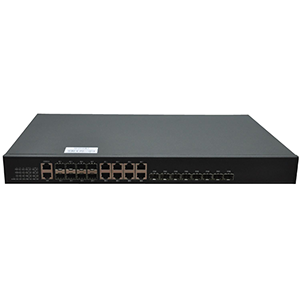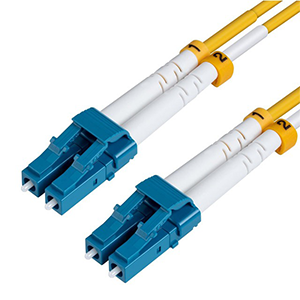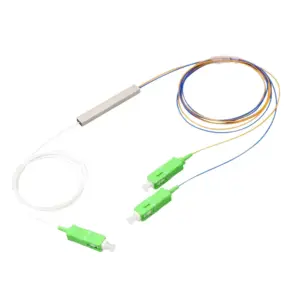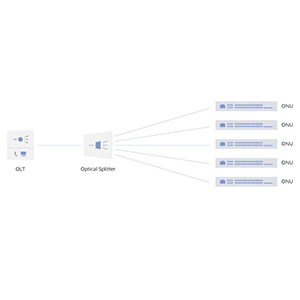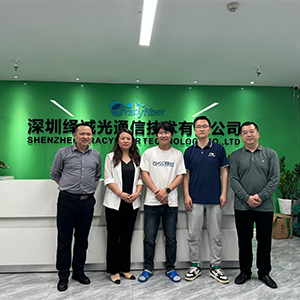Today, I will introduce you to PON optical fiber as the key technology to achieve high-speed optical fiber access. We will explore the principles, composition and application areas of PON optical fiber. As a revolutionary optical fiber solution, PON optical fiber is of great significance in broadband access. Let’s learn more about PON optical fiber together!
Basic knowledge of PON optical fiber
PON (Passive Optical Network) optical fiber is a point-to-multipoint optical communication technology based on optical fiber transmission. It connects an optical line terminal (OLT) and multiple optical network units (ONU) through a single optical fiber to realize data transmission. . The following are the basics of PON fiber optics:
-
Definition and working principle:
PON optical fiber is a distributed architecture optical fiber network that uses passive optical fiber components, such as optical splitters, to achieve multi-point distribution of optical signals. PON optical fiber uses time division multiplexing (TDM) technology to transmit uplink and downlink data in different time slots. Optical signals are sent from the OLT to the ONU and vice versa. The working principle of PON optical fiber is based on the transmission and distribution of light, achieving high-speed and high-bandwidth data transmission.
-
Components:
-
Optical Line Terminal (OLT): OLT is the central node of the PON optical network and is responsible for managing and controlling the entire network. It transmits data from the upper network to the optical fiber and distributes the downstream data to various ONUs. The OLT is usually located at the network provider’s central office or data center.
-
Optical Network Unit (ONU): ONU is a terminal device in the PON optical network and is installed at the location of the user or subscriber. Each ONU represents a user or a group of users. It receives and sends data optical signals to realize data transmission and reception.
-
Optical distributor: An optical distributor is a passive optical fiber component in a PON optical network and is used to distribute optical signals from an OLT to multiple ONUs. The optical splitter has multiple input ports and multiple output ports, and achieves multi-point distribution through light splitting and light collection.
-
Transmission performance and technical indicators:
-
Transmission distance: The transmission distance of PON optical fiber is usually in the range of 20-40 kilometers, depending on the specific design of the network and the quality of the optical fiber. Longer transmission distance can meet the needs of users covering a wider range.
-
Transmission rate: PON optical fiber supports different transmission rates, such as 1 Gbps (Gigabit per second) and 10 Gbps. The transmission rate determines the speed of data transmission and the bandwidth capability of the network.
-
Splitting ratio: PON fiber uses a splitter to distribute optical signals to multiple ONUs. The splitting ratio represents the ratio between the number of output ports and the number of input ports of an optical splitter. Common splitting ratios include 1:2, 1:4, 1:8, etc.
-
Optical attenuation: Optical signals will attenuate during transmission, so the attenuation in the optical fiber needs to be controlled. The optical attenuation of PON optical fiber is usually in the range of 0.3-0.5 dB/km to ensure the quality and transmission performance of optical signals.
So PON optical fiber technology achieves high-speed, high-bandwidth data transmission through optical transmission and distribution, with long transmission distance and flexible network architecture. It has been widely used in fields such as broadband access, telecommunications and multimedia communications.
Overview of the advantages of PON optical fiber
PON (Passive Optical Network) optical fiber has many advantages in broadband access. The following are its main advantages:
-
High bandwidth: PON optical fiber provides high-bandwidth transmission capabilities and can meet the needs of modern broadband applications. By using optical fiber as the transmission medium, PON optical fiber can provide transmission rates of up to multiple Gbps and support the rapid transmission of large-capacity data.
-
Shared transmission: PON optical fiber adopts a point-to-multipoint transmission architecture, and multiple users share the same optical fiber. This shared transmission enables efficient use of fiber resources, reduces fiber waste, and improves network scalability.
-
Flexible network topology: PON optical network has a flexible network topology that can be designed and deployed according to actual needs. It supports multiple topologies such as star, tree, and ring to adapt to network requirements of different sizes and complexity.
-
High-quality data transmission: PON optical fiber avoids electromagnetic interference and signal attenuation through light transmission, providing stable and high-quality data transmission. Compared with traditional copper cable transmission, PON optical fiber is superior in long-distance transmission and anti-interference capabilities.
-
Comprehensive service support: PON optical fiber can not only transmit data, but also support multiple services such as voice and video. By transmitting multiple services on the same optical fiber, PON optical fiber provides users with comprehensive communication services, such as broadband access, IP telephony, Internet TV, etc.
-
Network security: PON optical fiber has high network security. Since PON optical fiber uses light transmission, optical signals are not easy to eavesdrop and interfere with, providing a safer data transmission environment.
To sum up, PON optical fiber has the advantages of high bandwidth, shared transmission, flexible network topology and high-quality data transmission in broadband access. This makes PON optical fiber an ideal choice for providing high-speed, reliable and diverse services that meet the requirements of modern communication needs.
PON optical fiber application fields
PON (Passive Optical Network) optical fiber is widely used in various fields. The following are application cases of PON optical fiber in different scenarios:
-
Residential areas: PON optical fiber is used to provide broadband access and multimedia services in residential areas. By introducing optical fiber into the community, residents can enjoy services such as high-speed Internet access, high-definition video streaming, video on demand and Internet telephony. The shared transmission characteristics of PON optical fiber enable the entire community to share optical fiber resources and provide high-quality communication services.
-
Enterprise network: PON optical fiber is widely used in enterprise networks. It can be used to connect local area networks (LAN) between different office buildings to achieve high-speed data transmission and internal communication. PON optical fiber’s high bandwidth and flexible network topology enable enterprises to establish reliable and efficient network infrastructure to meet employees’ communication and data needs.
-
Rural areas: PON optical fiber is important in broadband access in rural areas. Traditional copper cable networks have limited transmission distance and provide low bandwidth in rural areas, while PON optical fiber can cover a larger range and provide high-speed Internet access. Through PON optical fiber, residents in rural areas can enjoy broadband services comparable to those in cities, promoting the exchange of information and the development of the rural economy.
Practical application cases:
- A PON fiber optic network has been deployed in a residential area. Residents can enjoy high-speed Internet access, high-definition video on demand, Internet telephony and other services through this network. The shared transmission of optical fiber enables residents in the entire community to enjoy high-quality communication services at the same time.
- A large enterprise deployed a PON fiber optic network between its office buildings to achieve high-speed data transmission and internal communications. The high bandwidth and flexible network topology of optical fiber support the daily operations of enterprises and various business applications, improving office efficiency.
- In rural areas, a village uses a PON fiber optic network to provide broadband access services. Residents can access the Internet through optical fiber to obtain information, learn knowledge, and carry out e-commerce and other activities, which promotes the development and digitalization process in rural areas.
These cases illustrate the importance and practical application of PON optical fiber in scenarios such as residential communities, enterprise networks, and rural areas. PON optical fiber meets the needs of different fields and promotes the construction of an information society and economic development by providing high-speed, reliable and shared communication services.
How to deploy and configure PON optical fiber
Deploying and configuring PON (Passive Optical Network) optical network involves the following key steps:
-
Network planning: Determine the scope and topology of the network, including the location and connection methods of optical distributors (ODN), and the layout of user terminal equipment. This needs to take into account factors such as transmission distance, number of users, bandwidth requirements, etc.
Optical distributor selection and wiring: Select the appropriate optical distributor (ODN) type and specification, and arrange it at the appropriate location according to the network plan. The optical splitter can be in the form of Tower or Wall-mount. The specific choice depends on the actual needs.
- Key points for optical distributor wiring: Ensure the correct connection and wiring of optical fibers to avoid bending and damage. Use appropriate fiber protection sleeves and splice boxes to protect the connection points at the end of the fiber. Avoid excessive stretching and distortion of optical fibers to ensure signal transmission quality and stability.
Optical power management and monitoring: PON fiber optic networks require optical power management and monitoring to ensure signal quality and network performance. Here are some commonly used methods:
-
Optical power monitoring: Use an optical power meter to measure the optical power on the optical fiber to check whether it is within the appropriate range. This helps to detect fiber connection or transmission problems in time and take appropriate measures to repair them.
-
Optical attenuators and optical gainers: According to actual conditions, optical attenuators and optical gainers are used to adjust the power level of optical signals to ensure appropriate optical power transmission between various nodes in the optical fiber network.
-
Fiber optic monitoring system: Deploy a fiber optic monitoring system to monitor the performance and status of the fiber optic network in real time. These systems can provide real-time alerts and fault diagnosis so potential issues can be addressed promptly.
-
The above steps and methods are the key points for deploying and configuring PON optical networks. Proper planning, optical splitter selection and cabling, optical power management and monitoring can ensure the reliability, performance and maintenance of PON fiber optic networks.
How to maintain and troubleshoot PON optical fiber
Maintenance and troubleshooting are key to keeping the PON (Passive Optical Network) optical network running normally. The following are key steps to maintain a PON fiber optic network:
-
Regular inspection: Regularly check the status of optical fiber connections, optical distributors, terminal equipment and other components to ensure their normal operation. Check the fiber end for connection quality and cleanliness and remove any dirt or impurities.
-
Optical power monitoring: Use an optical power meter to regularly measure the optical power on the optical fiber to check whether it is within the appropriate range. If abnormal optical power values are found, the optical attenuator or optical gainer may need to be adjusted to optimize signal quality.
-
Troubleshooting: Perform step-by-step troubleshooting when a network failure occurs. First check whether the optical fiber connection is firm and ensure that the end of the optical fiber is clean and undamaged. Then, check the status of the optical splitter and terminal equipment to confirm that they are working properly. If the problem persists, you can use equipment such as optical time domain reflectometry (OTDR) to locate and troubleshoot the fault.
-
Regular maintenance: Perform regular maintenance, including cleaning fiber ends, replacing aging connectors and cables, and checking the working status of optical splitters and other equipment. Regular maintenance prevents potential problems and ensures network reliability and performance.
Common troubleshooting issues and solutions include:
-
Fiber optic connection problems: Check whether the fiber connection is secure, whether the connector is clean, and reconnect or clean the connector.
-
Fiber breakage: Use an optical time domain reflectometer (OTDR) or other equipment to detect the location of fiber breakage and repair or replace the damaged fiber.
-
Optical power issues: Use an optical power meter to check the optical power on the fiber to ensure it is within the appropriate range. If the optical power is too high or too low, it can be corrected by adjusting the optical attenuator or optical gainer.
-
Equipment failure: Check whether the optical distributor, terminal equipment, etc. are working properly. If a fault is discovered, the equipment may need to be replaced or repaired.
Emphasizing the importance of regular inspection and maintenance of PON optical fibers is the key to ensuring stable network operation and extending fiber life. Through regular maintenance and inspection, potential problems can be discovered in time and corresponding measures can be taken, thereby improving network reliability and performance.
Summary
Thank you for reading our blog! Through the discussion in this article, you will have a deeper understanding of PON optical fiber as a key technology for realizing high-speed optical fiber access. PON optical fiber has huge advantages in the field of broadband access due to its high bandwidth and shared transmission characteristics. By choosing our PON fiber optic products, you will receive a solution of high quality, reliability and performance. Our team is ready to provide you with professional support for your fiber access needs.
PON Optical Fiber FAQ
PON fiber serves as the medium for transmitting data signals between the central office (OLT – Optical Line Terminal) and the customer premises (ONT – Optical Network Terminal). It enables the delivery of high-bandwidth services to end-users.
PON fiber networks offer several advantages, including high bandwidth capacity, long transmission distances, low power consumption, and the ability to serve multiple users through a single fiber, which reduces the cost of deployment.
PON networks primarily use single-mode fiber (SMF) to achieve long transmission distances and minimize signal loss. G.652.D fiber is commonly used due to its low attenuation and compatibility with various PON standards.
The main PON standards include GPON (Gigabit Passive Optical Network), EPON (Ethernet Passive Optical Network), and XG-PON (10-Gigabit Passive Optical Network). These standards define the technical specifications for PON fiber networks.
PON fiber networks use a technique called Time Division Multiplexing (TDM) or Wavelength Division Multiplexing (WDM) to allocate different time slots or wavelengths for individual users, allowing them to share the same fiber infrastructure.
Yes, PON fiber is suitable for both residential and business applications. It can deliver high-speed internet, voice, and video services to homes, apartments, offices, and other commercial buildings.
The maximum transmission distances in PON fiber networks depend on various factors, including the PON standard used, the quality of fiber optic cables, and the network architecture. Generally, PON networks can support distances of up to 20 kilometers (12 miles) or more.
A PON fiber network requires an OLT (Optical Line Terminal) located at the central office and an ONT (Optical Network Terminal) or ONU (Optical Network Unit) installed at the customer premises. Fiber optic cables and passive splitters are also essential components.
Yes, PON fiber networks have been widely deployed globally, particularly for broadband access in residential and business areas. They are a popular choice for delivering high-speed internet services and have become the backbone of many telecommunications networks.

